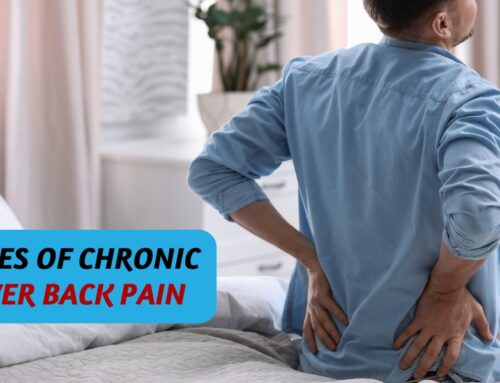Lower back pain affects millions worldwide, impacting daily life and productivity. At Chirayu Orthopaedic Clinic, we understand the complexity of this issue and aim to provide insights into its causes, effective treatment options, and prevention strategies.
Understanding Lower Back Pain
Lower back pain can stem from various sources, including muscle strains, ligament sprains, vertebral fractures, and degenerative disc disease. It often results from poor posture, sedentary lifestyles, or sudden movements that strain the back muscles.
Common Causes of Lower Back Pain
Muscle and Ligament Strains
Muscle and ligament strains are among the leading causes of lower back pain. These strains can occur due to improper lifting techniques, sudden movements, or weak core muscles. Overuse injuries from repetitive activities can also contribute to strain.
Herniated Discs
Herniated discs, also known as slipped discs or ruptured discs, occur when the soft inner core of a spinal disc pushes through a tear in the tougher outer layer. This condition can lead to nerve compression and intense pain in the lower back and legs.
Spinal Stenosis
Spinal stenosis is a condition where the spinal canal narrows, putting pressure on the spinal cord and nerves. This can cause pain, numbness, or weakness in the lower back, legs, or buttocks, especially during walking or standing.
Degenerative Disc Disease
Degenerative disc disease involves the gradual wear and tear of the spinal discs over time. As the discs lose hydration and elasticity, they become more susceptible to tears and herniation, leading to chronic lower back pain.
Effective Treatments for Lower Back Pain
Physical Therapy and Exercise
Physical therapy plays a crucial role in managing and alleviating lower back pain. Therapeutic exercises and stretches can strengthen core muscles, improve flexibility, and correct posture, reducing strain on the lower back.
Medications and Pain Management
Medications such as nonsteroidal anti-inflammatory drugs (NSAIDs), muscle relaxants, or pain relievers may be prescribed to alleviate acute or chronic lower back pain. In some cases, injections such as corticosteroids can provide targeted pain relief.
Surgery as a Final Option
For severe cases of lower back pain, surgery may be recommended to address structural issues like herniated discs or spinal stenosis. Surgical interventions aim to relieve pressure on nerves or stabilize the spine, improving long-term outcomes.
Preventive Measures to Avoid Lower Back Pain
Maintain Proper Posture
Proper posture is essential for preventing lower back pain. Avoid slouching or sitting for prolonged periods. Use ergonomic chairs and desks, and take regular breaks to stretch and walk around.
Exercise Regularly
Regular exercise, including activities that strengthen the core muscles and improve flexibility, can reduce the risk of lower back pain. Incorporate exercises like yoga, Pilates, or swimming into your routine.
Lift Safely and Use Proper Techniques
When lifting heavy objects, use proper lifting techniques to avoid straining the back muscles. Bend at the knees, keep the object close to your body, and avoid twisting movements while lifting.
Lower back pain is a prevalent issue that can significantly impact quality of life. By understanding its causes, exploring effective treatments, and implementing preventive measures, individuals can better manage and reduce the risk of experiencing lower back pain. At Chirayu Clinic in Kothrud, Pune, Dr. Vinil Shinde and his dedicated team are committed to providing orthopedic care for individuals experiencing back pain-related issues. Visit Chirayu Clinic, led by Dr. Vinil Shinde, to receive expert orthopedic care and guidance for a healthy and pain-free lifestyle.




